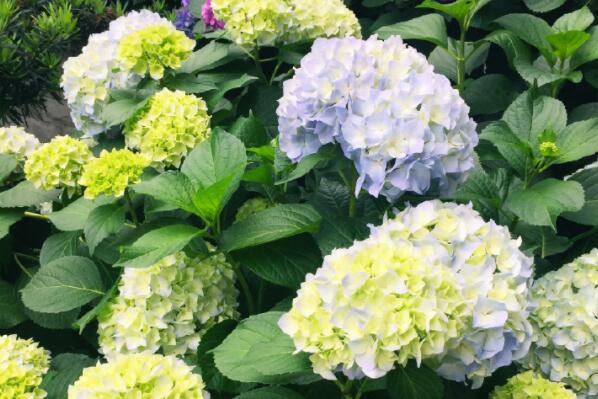How many years do coral beans usually live? How do you plant seeds? Can I put it in the bedroom? What if the leaves turn yellow?
Coral beans, also known as coral cherry, winter coral, jade coral, coral son, jujube, birthday fruit, exuberant growth, strong adaptability, reproduction and cultivation are easy, commonly used sowing reproduction. How many years do coral beans usually live? How do you plant seeds? Can I put it in the bedroom? What if the leaves turn yellow? Learned from the grower Uncle Gao that coral beans are perennials and can be raised for many years.

How to grow coral bean seeds?
1. Collect ripe berries in winter and spring, rinse them in water, fish them out to dry and store them for seed. The stored seeds are sown in indoor shallow pots in spring. Sowing flowers germinate quickly, neatly and grow fast. After the seedlings grow 3-4 leaves, replace them with 10 cm pots, or transplant them in an open nursery bed.
2. Coral beans like warm, sunny and well-drained soil. Plant one plant in each pot, pour enough water on the root after planting, and place it in a half-shaded place. Slow down the seedlings and transplant to a sunny place. After 1-2 months, the pot can be changed when the plant grows to 25-30 cm high and the root system grows full. Those transplanted in the open field seedbed shall be planted at a distance of 10 cm, and then planted at a distance of 30 cm when the length of the plant is long enough to cover the leaves between the plants. The growth of potted plants is affected by high temperature and drought in summer, and anthracnose is easy to occur in high temperature and rain. Planting on the ground can avoid these adverse effects. After arriving at the Beginning of Autumn in August, the soil is planted in a 7-inch basin. Attention should be paid to shaping during growth, so that the base of the plant grows into an independent trunk, 15-20 cm high, and a small crown is formed in the upper part. When the coral bean seedlings grow to 20 cm high, the top should be removed and the lower lateral branches should be erased to form a shorter trunk, prompting the lateral buds to occur from the middle of the main branch. When the lateral branches grow to 25 cm, you should also be careful, in order to produce more lateral branches and increase the fruit-setting parts. If you want to develop perennial plants, all the lateral branches should be cut short after the fruit falls off every winter, keeping the lateral branches about 15 cm long. If well pruned, the annual results of more than three years of plants can reach dozens to hundreds, so that the ornamental value of coral beans is greatly improved. In areas with warmer winter temperatures, coral beans can survive the winter outdoors, while in the north, they should be moved to low-temperature greenhouses to survive the winter. When the axillary buds begin to sprout in the next spring, they should be reshaped and pruned. Only three or four buds were left in the lower part of the main branch and side branches, and all the rest were cut off, combined with changing pots for a new year of maintenance. To ensure normal growth and blossom and bear fruit, rotten liquid fertilizer is applied 2-3 times a month. If stunting occurs in the seedling stage, the solution of Dysen zinc with a concentration of 600 times or copper sulfate [2] 0.1% Mel 0.2% solution should be removed and sprayed in time.
3. For the old plant, heavy cutting should be carried out in time before the beginning of spring, leaving 3-4 buds in the stout lateral branches and 1-2 buds in the weak branches. at the same time, the basin should be turned over, enough base fertilizer should be applied at the same time, and part of the weak old roots should be trimmed. In the future, too many new shoots that sprout should be thinned out appropriately.
In the summer high temperature season, if the rain is drenched or the basin soil is too wet, anthracnose is easy to occur. Fungicides can be sprayed regularly after the beginning of summer, such as alternating use of Dysen zinc and topazine.
Can I put coral beans in the bedroom?
You can't grow coral beans indoors.
Coral beans are native to America and tropical Asia. They like warm, humid, sunny environments and are suitable for growing in fertile, loose and well-drained soil. Coral beans have exuberant growth, strong adaptability, easy reproduction and cultivation, and are commonly used for sowing and reproduction.
Coral beans like warm, sunny, well-drained soil. Plant one plant in each pot, pour enough water on the root after planting, and place it in a half-shaded place. Slow down the seedlings and transplant to a sunny place. After 1-2 months, the pot can be changed when the plant grows to 25-30 cm high and the root system grows full. Coral beans can not grow normally indoors because there is no sunlight, and there are only long branches, fine leaves, yellow fruits and other symptoms, so it is said that coral beans cannot be grown indoors.
What if the coral bean leaves turn yellow?
1. The "hometown" of coral beans is the tropical regions of Asia and the Americas. The common feature of these two places is that there is plenty of sunshine all the year round and the climate is very warm. So when coral beans come to a lower temperature or even cold environment, it is inevitable that the leaves will be frostbitten, yellowed and shedding and other symptoms. In order to prevent freezing to death because the temperature is too low, the plant should be kept in a warm and sunny room in winter.
2. In addition to environmental factors, this plant also has requirements for the soil it uses-soil that is loose and well ventilated. In winter, we use water frequently to keep moisture in the soil, but excessive watering will rot the roots of coral beans, which will lead to yellowing and even shedding of leaves. Therefore, friends who grow coral beans should pay attention to the amount and frequency of each watering. Irregular loosening of the soil helps to drain the soil.
Also note that:
1. Proper fertilization. Fertilization is conducive to plant growth, and it is appropriate to apply liquid fertilizer once or twice a month.
2. Don't water frequently in winter. Can wait until the surface of the soil is completely dry before watering, it is not appropriate to water too much, the roots of coral beans can not be flooded.
3. Try not to have dust on the leaves of coral beans.
4. You can change the basin every three to four months, and pay attention to the choice of soil when changing the basin.
5. Friends who grow coral beans in the north can move the plants to a warm and well-lit room before "Frosts Descent", which can effectively prevent fruit drop.
6. The branches of coral beans are relatively luxuriant, and the messy branches can be properly trimmed when the weather conditions are good.
Time: 2019-03-19 Click:
- Prev

How to grow cotton? What are the high-yield technologies?
Cotton is an annual herb of cotton genus of Malvaceae, and it is one of the most important cash crops in the world. Cotton planting has a high planting value, so how to grow cotton? The following is to introduce the high-yield planting techniques of cotton, let's learn about it. Planting conditions of cotton
- Next

Can shrub hydrangea be raised indoors? How much is the seed price per jin? When will it plant and blossom? The methods are
Hydrangea, also known as eight immortals, powder ball, grass hydrangea, purple hydrangea, purple Yang flower, the flower shape is plump, large and beautiful, its color can be red and blue, is a common potted ornamental flowers. Can the hydrangeas be kept indoors? How much is the seed price per jin? When will it plant and blossom? What are the methods?
Related
- Fuxing push coffee new agricultural production and marketing class: lack of small-scale processing plants
- Jujube rice field leisure farm deep ploughing Yilan for five years to create a space for organic food and play
- Nongyu Farm-A trial of organic papaya for brave women with advanced technology
- Four points for attention in the prevention and control of diseases and insect pests of edible fungi
- How to add nutrient solution to Edible Fungi
- Is there any good way to control edible fungus mites?
- Open Inoculation Technology of Edible Fungi
- Is there any clever way to use fertilizer for edible fungus in winter?
- What agents are used to kill the pathogens of edible fungi in the mushroom shed?
- Rapid drying of Edible Fungi

